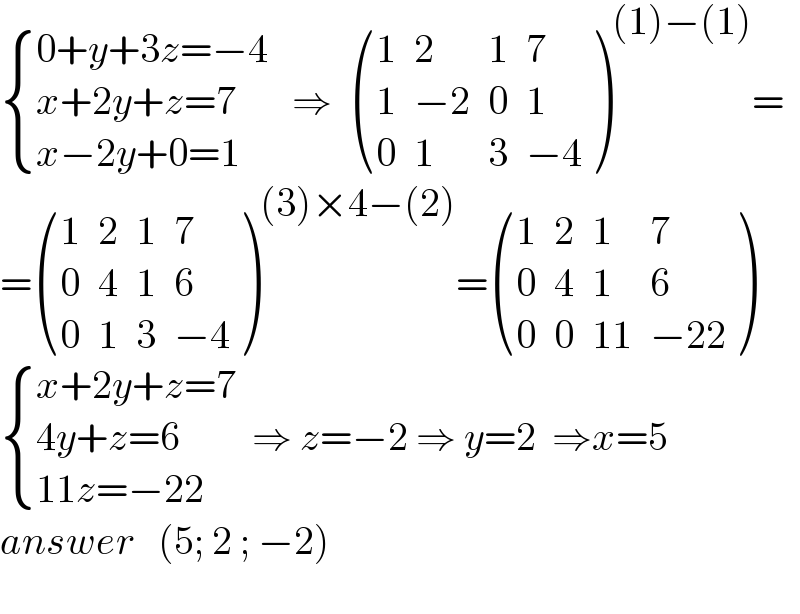
Question and Answers Forum
Question Number 152532 by mondli66 last updated on 29/Aug/21

Answered by amin96 last updated on 29/Aug/21

Commented by amin96 last updated on 29/Aug/21

Commented by SANOGO last updated on 29/Aug/21

Commented by KONE last updated on 29/Aug/21
![K=∫_(1/2) ^2 (1+(1/x^2 ))arctan(x)dx posont t=(1/x)⇔dx=−(1/t^2 )dt x=2⇔t=(1/2); x=(1/2)⇔t=2 K=∫_2 ^(1/2) (1+t^2 )arctan((1/t))×(−(1/t^2 ))dt =∫_(1/2) ^2 (1+(1/t^2 ))arctan((1/t))dt 2K=∫_(1/2) ^2 (1+(1/x^2 ))arctan(x)dx+∫_(1/2) ^2 (1+(1/t^2 ))arctan((1/t))dt =∫_(1/2) ^2 (1+(1/x^2 ))(arctan(x)+arctan((1/x)))dx car x et t son muette on sait que x>0 arctan(x)+arctan((1/x))=(Π/2) d′ou 2K=(Π/2)∫_(1/2) ^2 (1+(1/x^2 ))dx K=(Π/4)[x−(1/x)]_(1/2) ^2 =(Π/4)[2−(1/2)−(1/2)+2] K=((3Π)/4) KAB](Q152569.png)
